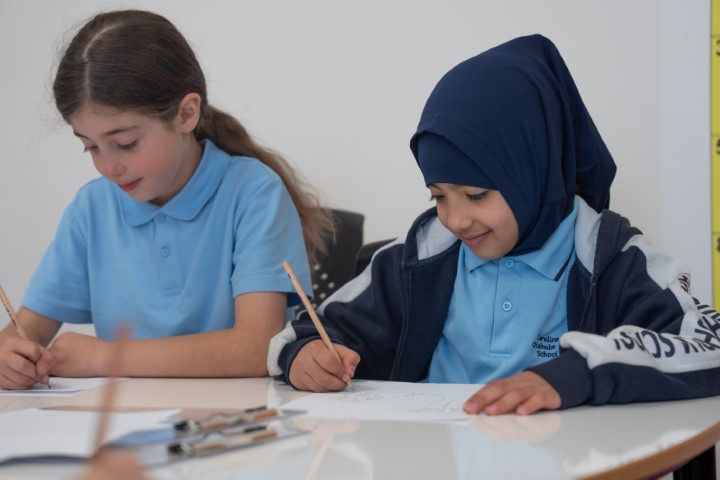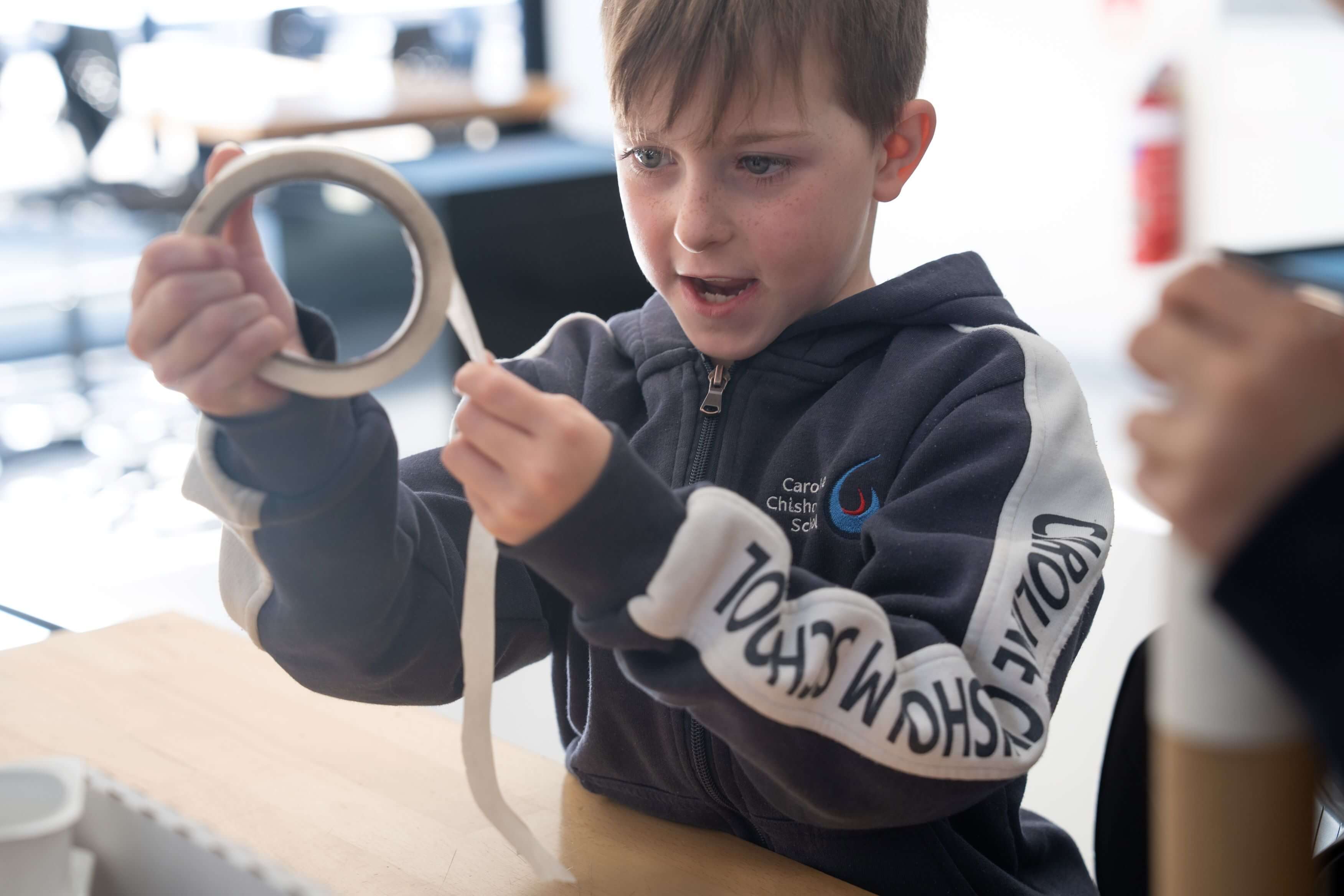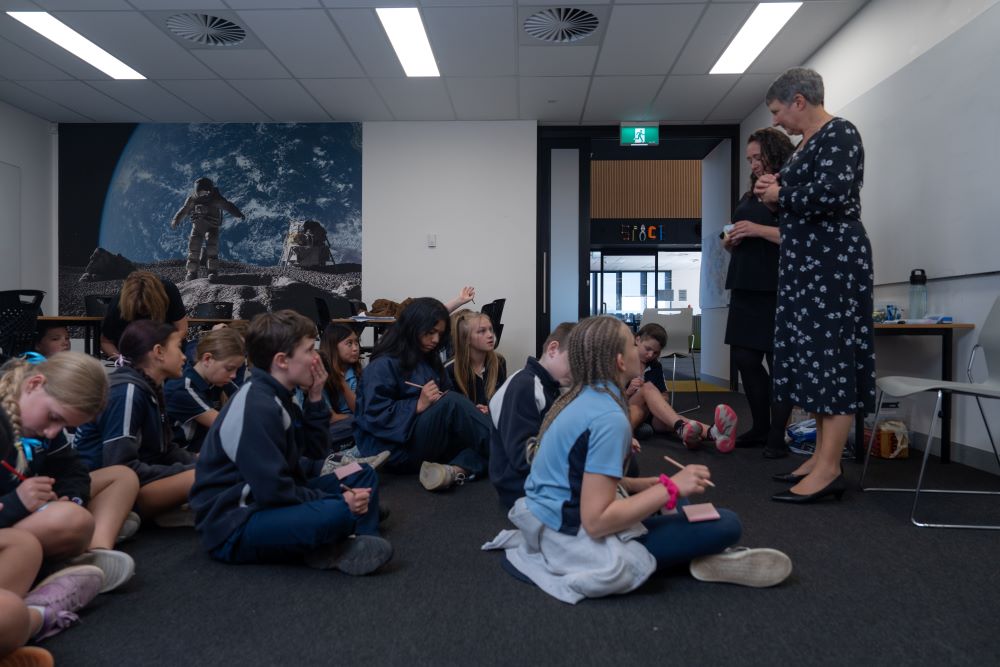Scorching swings and slides
View Sequence overviewStudents will:
- use design thinking processes to design a playground or piece of playground equipment that minimises the transfer of heat.
Students will represent their understanding as they:
- contribute to a class discussion about potential solutions that stops/slows the heating up of playground equipment on a sunny day.
- create annotated diagrams of their playground/piece of playground equipment that show/explain where heat transfer is occurring, and how it will be slowed/stopped.
- communicate their design thinking and choices in a manner appropriate for a specific audience.
In the Act phase, assessment is summative.
Students working at the achievement standard should have:
- demonstrated an understanding that heat can be transferred.
- Evidence might include labelled diagrams identifying heat sources, diagrams with arrows showing transfer of heat from a heat source to another object, or descriptions of objects increasing in temperature once they have come into contact with a heat source.
- applied their learning when selecting materials that decrease or slow conductivity of heat.
- Evidence should be found in student labelled playground design prototype.
Refer to the Australian Curriculum content links on the Our design decisions tab for further information.
Whole class
Class science journal (hard-copy or digital)
Each student
Individual science journal (hard-copy or digital)
If you have decided to ask students to build prototypes/models, you will need reused and recyclable materials that might be useful. Students may have been collecting them since the beginning of the unit. Examples include boxes (tissue, cereal, shoe, etc.) and other cardboard products, foil and trays made out of foil, bottle tops and jar lids, skewers, paddlepop sticks, etc.
Lesson
The Act phase empowers students to use the Core concepts and key ideas of science they have learned during the Inquire phase. It encourages students to develop a sense of responsibility as members of society—to act rather than be acted upon. It provides students with the opportunity to positively influence their own life and that of the world around them. For this to occur, students need to build foundational skills in an interactive mutually supportive environment with their community.
When designing the Act phase, consider ways that students could use their scientific knowledge and skills. Consider their interests and lifestyles that may intersect with the core concepts and key ideas. What context or problem would provide students with a way to use science to synthesise a design? How (and to whom) will students communicate their understanding?
Read more about using the LIA FrameworkRe-orient
Re-examine the data and ideas collected in the class science journal over the course of the teaching sequence.
Discuss what conclusions students have drawn about heat:
- how it is transferred
- how it changes the temperature of objects around it
- how temperature is measured
- how some objects change temperature quicker than others
The Act phase empowers students to use the Core concepts and key ideas of science they have learned during the Inquire phase. It encourages students to develop a sense of responsibility as members of society—to act rather than be acted upon. It provides students with the opportunity to positively influence their own life and that of the world around them. For this to occur, students need to build foundational skills in an interactive mutually supportive environment with their community.
When designing the Act phase, consider ways that students could use their scientific knowledge and skills. Consider their interests and lifestyles that may intersect with the core concepts and key ideas. What context or problem would provide students with a way to use science to synthesise a design? How (and to whom) will students communicate their understanding?
Read more about using the LIA FrameworkScience education consists of a series of key ideas and core concepts that can explain objects, events and phenomena and link them to the experiences encountered by students in their lives. The purpose of the Anchor routine is to identify and link students’ learning to these ideas and concepts in a way that builds and deepens their understanding.
When designing the Act phase of a teaching sequence, consider the core concepts and key ideas that are relevant. The Anchor routine provides an opportunity to collate and revise the key knowledge and skills students have learned, in a way that emphasises the importance of science as a human endeavour.
Each student comes to the classroom with experiences made up from science-related knowledge, attitudes, experiences and resources in their life. The Connect routine is designed to tap into these experiences, and that of their wider community. It is also an opportunity to yarn with community leaders (where appropriate) to gain an understanding of the student’s lives, languages and interests. In the Act phase, this routine reconnects with the science capital of students so students can appreciate the relevance of their learning and the agency to make decisions and take action.
When designing a teaching sequence, consider the everyday occurrences, phenomena and experiences that might relate to the science that they have learned. How could students show agency in these areas?
Read more about using the LIA FrameworkWhy consider heat when designing playgrounds?
Refer back to the images viewed in the Launch phase showing playgrounds, particularly the thermal image.
Students share their own experiences outdoors on a really hot day.
Examine some news articles that provide information about hot playgrounds and share stories of the consequences. Some examples are:
- Kidsafe NSW Playground News newsletter: How Hot Is Too Hot To Play?
- 9Honey article: 'Startling' temperature tests reveal danger of hot playgrounds ahead of summer
- The Conversation article: Materials that make heat worse for our kids demand a rethink by designers
Discuss: Now that we understand scientifically how heat is transferred, and how it changes the temperature of objects, why is it important that we use this understanding to design better playground areas?
The Act phase empowers students to use the Core concepts and key ideas of science they have learned during the Inquire phase. It encourages students to develop a sense of responsibility as members of society—to act rather than be acted upon. It provides students with the opportunity to positively influence their own life and that of the world around them. For this to occur, students need to build foundational skills in an interactive mutually supportive environment with their community.
When designing the Act phase, consider ways that students could use their scientific knowledge and skills. Consider their interests and lifestyles that may intersect with the core concepts and key ideas. What context or problem would provide students with a way to use science to synthesise a design? How (and to whom) will students communicate their understanding?
Read more about using the LIA FrameworkWhen students use their knowledge and skills in new ways, they also have an opportunity to develop and use their creative and critical thinking skills. With scaffolded support, they can become more confident to work in a team and develop a stronger sense of autonomy. This results in stronger student outcomes, attitudes and sense of empowerment.
When designing a teaching sequence, consider what activity would allow students to showcase their knowledge and skills. Consider the current abilities of your students. What are they capable of explaining? What props could they design or build that would support their explanations? How much information would they need in their design brief to support their thinking? How does this connect with their lives and interests?
Design a playground
Using the steps of the design thinking process, students use their understanding of heat transfer and conductivity to design a playground/piece of playground equipment with a focus on reducing heat on a sunny day. You might present students with a design brief to outline what you would like them to do.
Define
Outline the problem in a simple manner such as:
How can we ... (design a playground) ... so that ... (we can better control the amount of heat transferred to playground equipment/surfaces on a hot day)?
- Who are we helping?
- What do they need help with?
- Why do they need help?
Ideate
Brainstorm ideas related to the design of the playground/piece of equipment.
At this stage, to support creative thinking, every idea offered by students should be recorded in the class science journal. No idea is discounted, as the practicality/possibility of each idea will be considered later.
As students offer ideas, ask probing questions (‘why do you think …’ or ‘how do you know that…’) to draw out the reasoning and evidence behind the idea.
Potential reasons, related to the core concept, that students might include:
- Wood isn’t a good conductor of heat—it takes longer to get as hot as plastic or metal.
- Grass was the ground covering that got least hot in the time.
- Shade helped to slow/prevent the transfer of heat.
Students might also offer other ideas that weren’t specifically tested during the learning sequence. For example, they might suggest installing fans in the playground, or that running cold water over a surface will stop it getting too hot (due to the evaporation removing the heat energy). These ideas are valid and can be added to the board, but it should be noted that these ideas were not specifically tested, and questioning should be used to determine where students may have gotten these ideas from.
Once all ideas are listed, discuss which ones might be easy to include in a design and which ones might not be.
Jointly construct a set of criteria for which the designs will be assessed.
Prototype
Either independently or in teams, student(s) create a labelled diagram/s of their playground or piece of equipment, including explanations related to why each material was chosen in relation to heat transfer. Alternatively, students might prepare a poster that describes why heat can be so dangerous on a playground, and why careful playground design is important.
Optional: Students/teams are provided opportunities to share their ideas and receive peer feedback (download AITSL's guide for more on peer feedback).
Optional: Students build a 3D prototype of their design.
Design briefs
A design brief is an outline of the project, who benefits, and why they need help.

A design brief is an outline of the project, who benefits, and why they need help. This can be done through a simple ‘How can…so that…’ statement. As students move through the design cycle, they will develop a set of criteria to evaluate their proposed solution.
A design brief is an outline of the project, who benefits, and why they need help. This can be done through a simple ‘How can…so that…’ statement. As students move through the design cycle, they will develop a set of criteria to evaluate their proposed solution.
Prototypes
A prototype can be anything that is used to put an idea into action.

A prototype can be anything that is used to put an idea into action by experimenting with ideas and modifying and adapting the approach. It can involve sketches of a social media campaign, a model, a storyboard, or a 3D construction. It is important to build more than one prototype. The first prototype should be produced quickly and cheaply to test the initial concept. Simple materials can be used to outline or build the general idea that can be filled in at a later stage (after testing and feedback).
Knowing that it is not the final prototype allows ideas to be held lightly and easily discarded if the prototype does not receive good feedback from the user. Opportunities to address assumptions and alternative concepts occur when modifying the second and third prototypes.
Collecting the multiple prototypes allows them to be used for reflection during the design cycle's sharing stage.
A prototype can be anything that is used to put an idea into action by experimenting with ideas and modifying and adapting the approach. It can involve sketches of a social media campaign, a model, a storyboard, or a 3D construction. It is important to build more than one prototype. The first prototype should be produced quickly and cheaply to test the initial concept. Simple materials can be used to outline or build the general idea that can be filled in at a later stage (after testing and feedback).
Knowing that it is not the final prototype allows ideas to be held lightly and easily discarded if the prototype does not receive good feedback from the user. Opportunities to address assumptions and alternative concepts occur when modifying the second and third prototypes.
Collecting the multiple prototypes allows them to be used for reflection during the design cycle's sharing stage.
Supporting critical thinking
Accept all ideas and reasons as valid, and allow students to demonstrate their understanding when they make their design decisions.

By asking students to link their ideas with the evidence they have collected, they will begin to think about the reasoning behind their ideas. This, in turn, supports them to think critically later on, when formulating criteria for design, and when making decisions about their designs.
However, in order to not stifle or discourage creativity, it is important not to place value judgements on these reasons. Accept all ideas and reasons as valid, and allow students to demonstrate their understanding when they make their design decisions.
By asking students to link their ideas with the evidence they have collected, they will begin to think about the reasoning behind their ideas. This, in turn, supports them to think critically later on, when formulating criteria for design, and when making decisions about their designs.
However, in order to not stifle or discourage creativity, it is important not to place value judgements on these reasons. Accept all ideas and reasons as valid, and allow students to demonstrate their understanding when they make their design decisions.
The Act phase empowers students to use the Core concepts and key ideas of science they have learned during the Inquire phase. It encourages students to develop a sense of responsibility as members of society—to act rather than be acted upon. It provides students with the opportunity to positively influence their own life and that of the world around them. For this to occur, students need to build foundational skills in an interactive mutually supportive environment with their community.
When designing the Act phase, consider ways that students could use their scientific knowledge and skills. Consider their interests and lifestyles that may intersect with the core concepts and key ideas. What context or problem would provide students with a way to use science to synthesise a design? How (and to whom) will students communicate their understanding?
Read more about using the LIA FrameworkA key part of Science Inquiry, the Communicate routine provides students with an opportunity to communicate their ideas effectively to others. It allows students a chance to show their learning to members of their community and provides a sense of belonging. It also encourages students to have a sense of responsibility to share their understanding of science and to use this to provide a positive influence in the community.
When designing a teaching sequence, consider who might be connected to the students that have an interest in science. Who in their lives could share their learning? What forum could be used to build an enthusiasm for science. Are there members of the community (parents, teachers, peers or wider community) who would provide a link to future science careers?
Read more about using the LIA FrameworkShare our designs
Test and Share
Students communicate their playground designs to the chosen audience identified in the previous step. You might consider using the CROWN tool to support students in this.
Students should be encouraged to prepare questions to ask this audience that tests the possibility of their design, for example questions about cost, space and safety.
Reflect on the sequence
You might:
- refer back to the list of student questions asked in Lesson 1. Determine which questions have been answered over the course of the learning sequence, what the ‘answers’ to the questions are, and the evidence that supports these claims. Address questions that have not been answered during the learning sequence, discuss why they might not have been addresses and potential investigations that might support students to answer them.
- consider what students have learnt about heat transfer and resulting changes in temperature.
- ask students to represent this learning in words, symbols and pictures.
- discuss why it’s important to have a good understanding of heat transfer: what kinds of jobs would require you to understand this? What about in your everyday life? What tasks that you do around the house involve heat transfer? What activities might be affected?
Testing prototypes
The testing of a prototype allows students to receive feedback.

The testing of a prototype allows students to receive feedback on their prototype and to gain a greater understanding of the user. Alternative testing methods must be considered and evaluated to justify the designed prototype's effectiveness.
Following testing and feedback, students should be encouraged to cycle back to the empathy or prototype stage.
The testing of a prototype allows students to receive feedback on their prototype and to gain a greater understanding of the user. Alternative testing methods must be considered and evaluated to justify the designed prototype's effectiveness.
Following testing and feedback, students should be encouraged to cycle back to the empathy or prototype stage.